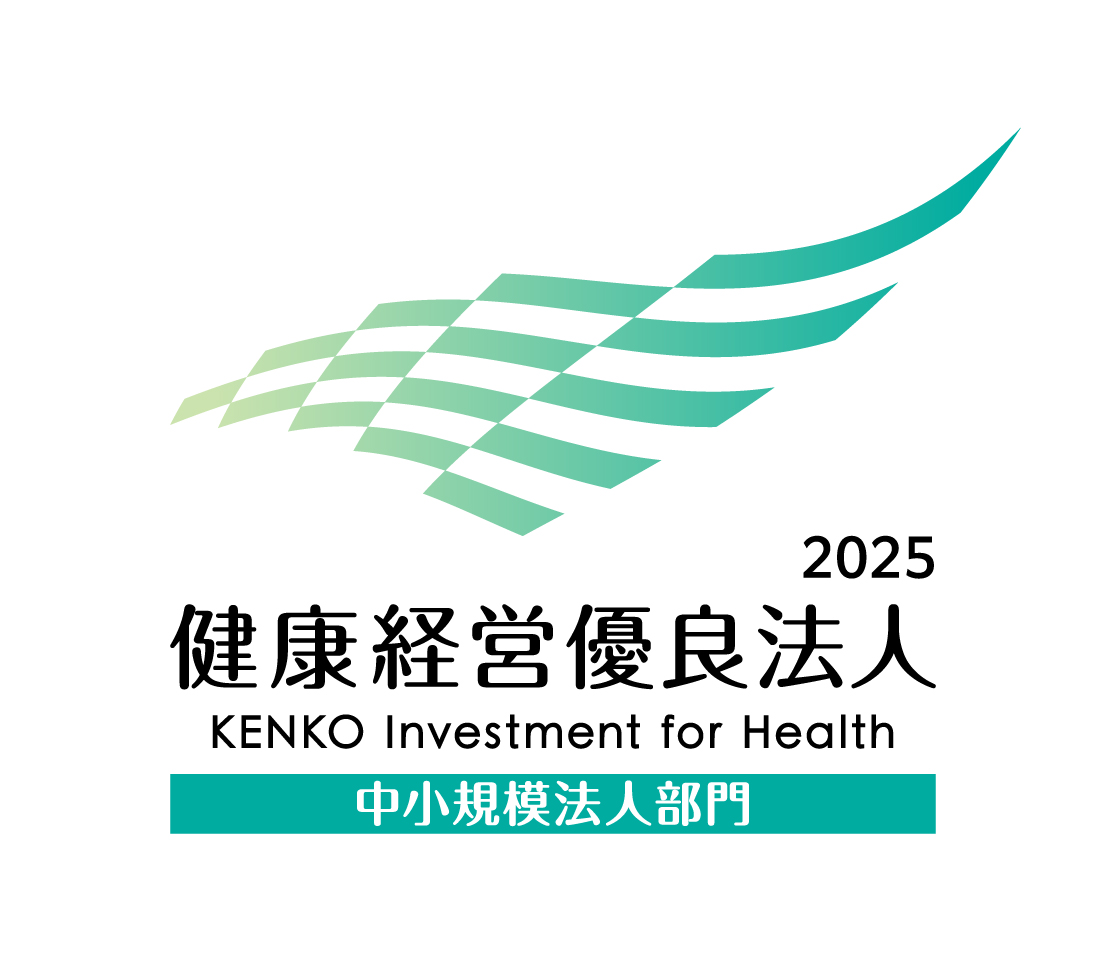Society
Increasing Engagement
Setting Employee Engagement as an Important Indicator of Our Corporate Strategy
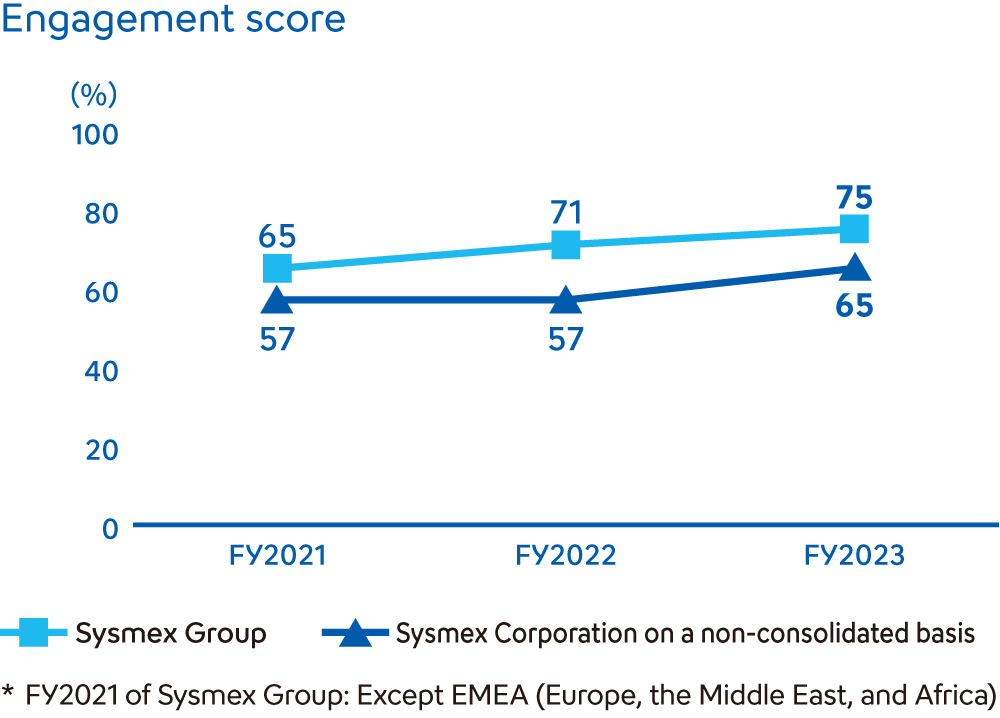
The engagement score of Sysmex Corporation for fiscal 2024 was 68%. In line with evolving social values and changing times, we also monitor the level of empathy with our corporate philosophy (70% in fiscal 2024) and well-being (59% in fiscal 2024) as part of our efforts to foster an organizational culture where every individual finds their work fulfilling. We have also introduced pulse surveys conducted in shorter intervals to understand the progress of measures and promote initiatives to incorporate employee input rapidly.
To promote in-house communication, we have introduced a web service called Sysmex Peer Bonus, through which employees can mutually send messages of gratitude, encouragement, greetings, etc., with tips and receive rewards in points. We strive to create an attractive workplace in which everyone can work comfortably, based on the concept of “making work more enjoyable.”
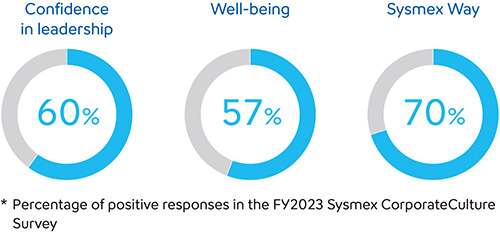
Stakeholder’s Voice
Sysmex is a silver partner sponsor of the Signature Pavilion “Future of Life” at Expo 2025 Osaka, Kansai, Japan, produced by Professor Hiroshi Ishiguro of The University of Osaka, a leading authority in robotics. Inspired by Professor Ishiguro’s wish for sponsoring companies to envision the future together, Sysmex joined this co-creation project to explore what society and life might look like 50 years from now.
Around 50 employees from across divisions, occupations, and generations voluntarily came together to launch the in-house project. After three years of dialogue and trial and error, they developed ideas for three products to support the future of life.
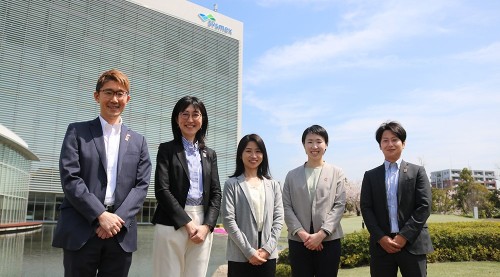
Sysmex's EXPO Co creation Project Member
Envisioning Healthcare for the Mind in 2075: A Sysmex Employee-led Story from Expo 2025
Monitoring the Effects of Human Capital Investment
Sysmex aims to balance value-added productivity and employee engagement. As indicators of the effects of human capital investment, we set value-added productivity and employee engagement scores and monitor them continually.
The value-added productivity* per employee of Sysmex Corporation for fiscal 2024 reached a record high of 15,042 yen per hour, which demonstrates the effectiveness of our human capital investment. The return on human capital investment (operating profit divided by labor cost) also reached a record high of 173.1%. These results are accomplished as high levels of employee engagement are maintained and employees are willing to take on new tasks. Our action plans to foster an organizational culture that balances value-added productivity and employee engagement have been producing consistent outcomes.
- (Operating profit + labor cost + human capital depreciation)/working hours
Work-Life Balance Support Program
Joint Achievement of Comfortable Working and Productivity Enhancement
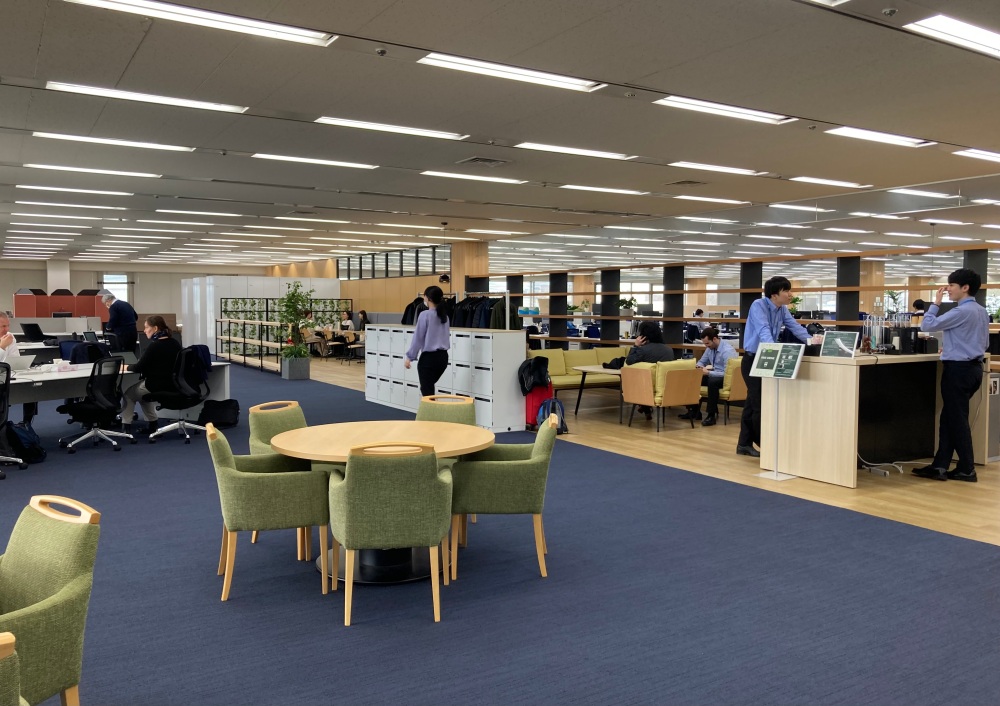
It adopts a hybrid workstyle combining onsite (office) and remote (from home, etc.) work. In addition, we promote time management to realize a strong work-life balance by allowing our employees to combine flextime, staggered office hours, and “stepping out from work” according to their business duties and individual lifestyles. We have also introduced an Activity Based Working (ABW) office model by incorporating digital technologies, web conferencing systems, and office furniture, along with layouts designed to facilitate communication through thoughtful consideration of people flow.
Promotion of Paid Leave Utilization and Employee Benefits Program
Sysmex Corporation uses various measures to encourage employees to take paid leave. They include the introduction of recommended dates for paid leave and a half-day paid leave system. Other measures include allowances paid under the “Cafeteria Plan*” (our welfare program) to employees who take consecutive paid leave days for travel, leisure, or courses at culture centers.
- The Company provides employees with cafeteria points every year. Employees can select and use the benefits they prefer from a menu of various benefits (childcare and nursing care support, health support, self-development, etc.) depending on their lifestyle and needs.
Supporting a Balance between Work and Child-Rearing
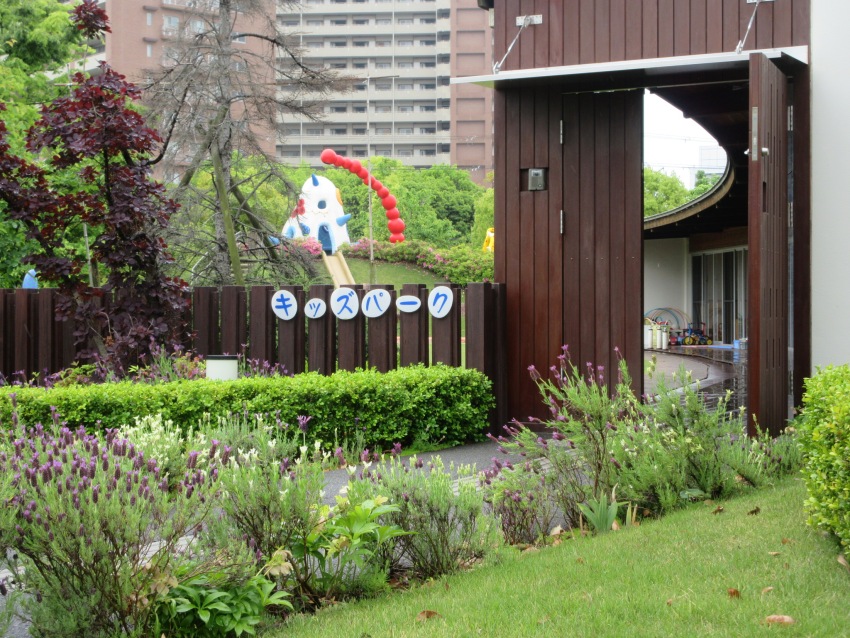
Sysmex Corporation has introduced several programs to provide family support, from prenatal care to child-rearing. These programs include leave for parenting, fertility treatment or morning sickness, a spouse’s childbirth, and the nursing of children. When childcare leave expires after an employee’s child turns two years of age, employees are entitled to reduced working hours and a work-from-home program until the child enters junior high school. We support employees returning to work after childcare leave, including with seminars before their return, as well as distribution of newsletters (including the Diversity Newsletter) to employees on childcare leave. Technopark, our R&D site, has an in-house daycare center called Sysmex Kids Park. It is also available for temporary use when employees’ spouses work part-time, children’s guardians are sick, or an employee is arranging a funeral. Through such support, we encourage all employees who desire to return to work after childcare leave to do so.
In recognition of such initiatives, we obtained the "Platinum Kurumin Plus" certification in fiscal year 2025. This certification is awarded to companies that have received "Kurumin"* certification and are dedicated to providing an enhanced level of childcare support for their employees. Furthermore, it is granted to companies that meet specific standards in supporting employees in balancing work with infertility treatment. In fiscal 2023, we were also selected as a “Next Nadeshiko: Companies Supporting Dual-career and Co-parenting” by the Ministry of Economy, Trade and Industry and the Tokyo Stock Exchange. This program recognizes companies that make particularly outstanding efforts to support dual-career and co-parenting.
- Based on the Act on Advancement of Measures to Support Raising Next-Generation Children, companies that formulate business plans as general business operators, meet the targets designated by such plans, and satisfy certain standards may receive Kurumin certification as companies “that support child-rearing” from the Ministry of Health, Labour and Welfare.
-
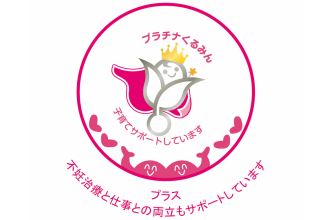
The “Platinum Kurumin Plus” Certification logo -
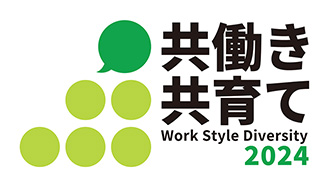
Granted “Next Nadeshiko: Companies Supporting Dual-career and Co-parenting” awarded (fiscal 2023)
Encouraging Male Employees to Take Childcare Leave
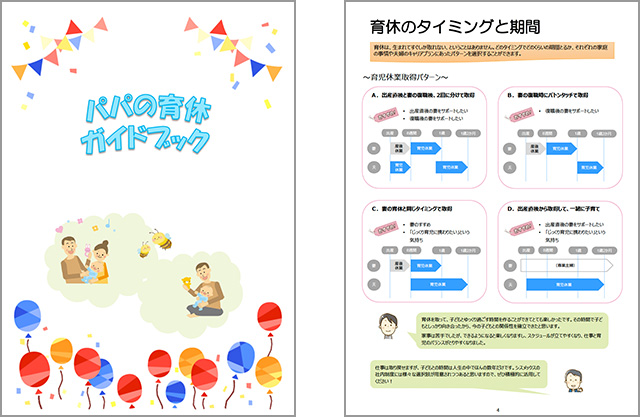
Sysmex Corporation implements measures to increase the number of male employees taking childcare leave. These measures include the distribution of Dad’s Childcare Leave Guidebook and the organization of seminars for male employees and their supervisors, inviting external lecturers. At the seminar, lectures were given and opinions were exchanged about the importance of men being involved in parenting, work-life balance, and the essentials of childcare, in addition to appropriate support by supervisors to allow male employees to take childcare leave. As a result of these efforts, the percentage of fathers taking childcare leave was 62% in fiscal 2022, 61% in fiscal 2023, and 77% in fiscal 2024, meaning that we achieved our target of 60% for three consecutive years.
Stakeholder’s Voice
Mbogo Ivan, HUP Business Division

Men typically have fewer opportunities than women to connect with their children during pregnancy, so I saw paternity leave as a valuable time to begin building a strong relationship with my child. I took approximately two months of leave.
When I shared my intention to take paternity leave, my supervisor and colleagues recognized the importance of participating in childcare, offered their full support, and even provided helpful parenting advice.
One of the biggest benefits of taking paternity leave was that it allowed my partner to return to work. Having gained substantial experience in childcare and housework during my leave, my partner can now confidently leave household responsibilities to me when my partner is on business trips or unwell. Taking leave also helped me better understand the challenges women face, and it gave me a deeper sense of respect and appreciation. I am truly glad I made the decision to take paternity leave.
Systems to Support Work-Life Balance
Support for continued work and promotion of social contribution activities
In addition, we have a leave of absence and re-employment program designed to offer a wide range of opportunities for employees who leave our employment due to their spouses’ overseas assignments or for other personal reasons so that they can return to work. Volunteer leave and donor leave programs are also available as support systems intended to make it easier for employees to take leave for particular purposes.
Activities at Group Companies
Our Group companies also engage in various initiatives to provide a comfortable working environment.
The companies in the EMEA region1 have all received the Great Place to Work2 award for their excellent workplace environments and employee satisfaction. At Sysmex UK, all managers have completed training on well-being so that emphasis is placed on the health of each and every employee and a positive work-life balance is ensured for all employees. Sysmex South Africa is expanding systems to support a balance between work and child-rearing. The efforts include the incorporation of a maternity policy into its human resources policies and a guarantee of four months of paid maternity leave. Additionally, Sysmex Spain and Sysmex Portugal have been selected by El Mundo as two of the “100 Best Companies to Work For.”
- 1 Sysmex Europe : Sysmex Deutschland, Sysmex Belgium, Sysmex Netherland, Sysmex Turkey, Sysmex Austria, Sysmex UK, and Sysmex France
- 2 Rankings of companies announced by Great Place to Work (GPTW), a research institute that specializes in studies and analyses of corporate employee job satisfaction. GPTW publishes in influential media the names of companies and organizations in about 60 countries that have been judged to meet certain standards.
-
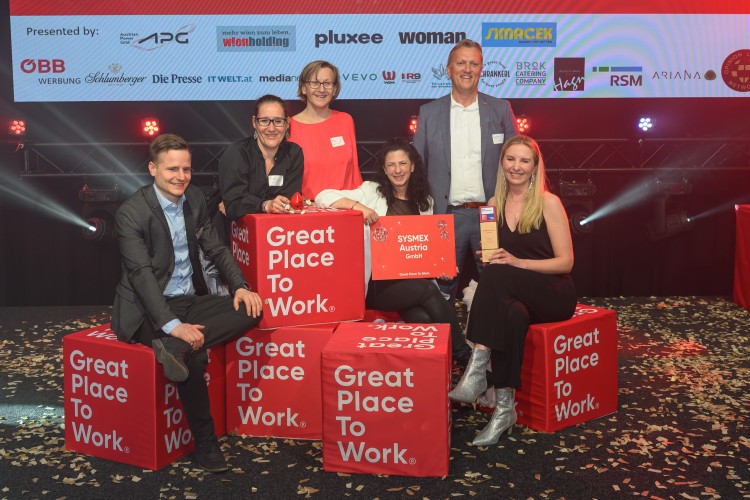
Great Place to Work Award Ceremony (Austria) -
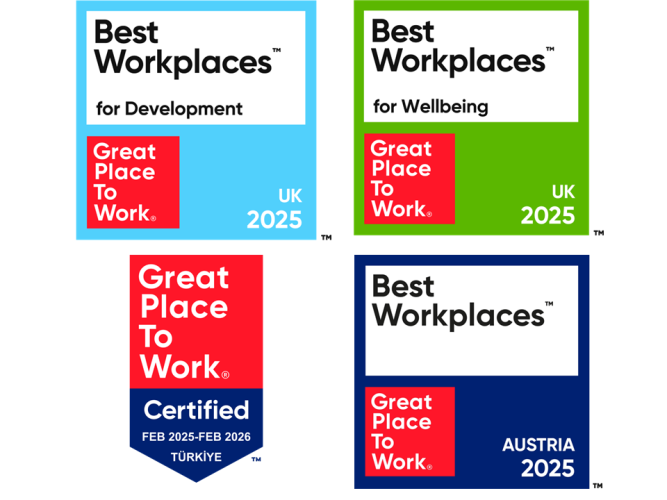
Other Activities at Group Companies
| Company | Initiatives |
|---|---|
| Sysmex RA |
|
| Sysmex America |
|
| Sysmex Europe |
|
| Sysmex Nederland |
|
| Sysmex Shanghai |
|
| Sysmex Asia Pacific |
|

